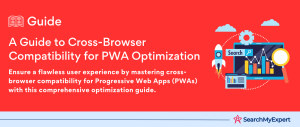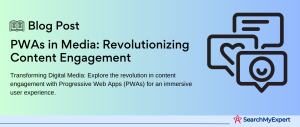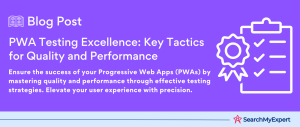Analytics for Progressive Web Apps
What are Progressive Web Apps (PWAs)?
Imagine web apps that feel just like native apps on your phone. Progressive Web Apps (PWAs) do just that! They’re the superheroes of the web world, offering users an immersive, app-like experience directly in their web browsers. Key features? You bet!
- Offline Access: Say goodbye to frustration when you lose your internet connection. PWAs got your back, working smoothly even offline.
- Installability:
Who needs app stores? Download PWAs directly from the web browser onto your device. - Fast Loading: Speed is key. PWAs load in a flash, making waiting times a thing of the past.
Why Analytics Matter for PWAs?
Now, let’s dive into the analytics universe of PWAs. Unlike traditional web apps, PWAs pose unique challenges in measuring their performance and user engagement. Why so? Well, their hybrid nature – straddling the line between web and mobile app – demands a specialized approach to analytics.
- Understanding User Behavior: Analytics help decipher the unique user journeys on PWAs. This insight is golden for optimizing the user experience.
- Performance Metrics:
Speed and responsiveness matter. Analytics aid in tuning these aspects for a seamless user experience. - Driving Conversions: At the end of the day, it’s about impact. Effective analytics strategies can significantly enhance conversion rates, turning visitors into loyal users.
The power of analytics in the realm of PWAs is undeniable. It’s not just about collecting data; it’s about making sense of it to continually refine and improve the PWA experience, thus driving user satisfaction and business success.
Key Metrics for Tracking PWA Performance
Engagement Metrics
Diving into the world of PWA analytics, engagement metrics are like the pulse of your app. Let’s break them down:
- Active Users: This metric is about counting visitors who engage with your app. Think of it as taking attendance in a classroom. More active users? More popularity.
- Session Duration: How long do users stick around? It’s like measuring the length of a coffee date – the longer, the better.
- Bounce Rate:
This one’s tricky. A high bounce rate is like guests leaving a party early. It signals that users might not be finding what they need. - Repeat Visits: Loyalty matters. Repeat visits are like customers returning to their favorite café. It’s a sign of app stickiness and user satisfaction.
Performance Metrics
Next, let’s speed into performance metrics. They’re all about how well your PWA runs:
- Loading Speed:
Speed wins races, and in PWAs, it wins users. A fast-loading app is like a quick-starting car – always preferred. - Time to First Interaction:
This metric measures the time from loading to usability. It’s like the time it takes for a TV to turn on and show a picture. - Responsiveness: How well does your app respond to user interactions? It’s like a conversation – the quicker the response, the better the dialogue.
Conversion Metrics
Finally, conversion metrics. They’re the bridge to business success:
- Add-to-Cart Rate:
In e-commerce PWAs, this is key. It’s like tracking how many shoppers pick up items in a store. - Checkout Completion Rate:
This one’s crucial. It’s like counting how many of those shoppers actually make it to the cashier. - Goal Conversions:
Set a goal, and track it. Whether it’s newsletter sign-ups or downloads, these conversions are milestones towards your business objectives.
Choosing the Right Analytics Tools for PWAs
Popular PWA Analytics Tools
Selecting the right tools for PWA analytics is like assembling a toolkit for a specialized job. Let’s compare some front-runners:
- Google Analytics:
The Swiss Army knife of analytics. It’s versatile, offering a broad view of user interactions. However, it may require custom configuration for deeper PWA insights. - Firebase Performance Monitoring:
This is the high-tech gadget. It’s excellent for real-time performance tracking but leans more towards app development than comprehensive web analytics. - WebVitals:
The stethoscope for PWAs. It focuses on user experience metrics like loading time and interactivity. Simple yet essential. - Lighthouse: Think of it as your PWA’s personal trainer. It audits and provides actionable feedback, although it’s more about performance best practices than ongoing analytics.
Each tool has its superpowers and limitations. The trick is to find the one (or combination) that aligns best with your PWA’s goals and needs.
Integrating Analytics with PWAs
Integration is key. There are different ways to marry your PWA with analytics tools:
- Code Implementation: It’s like embedding a GPS in a car. Inserting specific code snippets or scripts into your PWA ensures that user interactions are tracked accurately.
- Service Worker Configuration: Service workers are the behind-the-scenes heroes. Configuring them for analytics means you can track offline interactions, a unique aspect of PWAs.
Data Visualization and Reporting
Finally, let’s talk about presenting your data. It’s not just about numbers; it’s about stories.
- Dashboards: Your PWA’s control center. Dashboards should give you a real-time snapshot of key metrics at a glance.
- Reports:
Think of reports as your PWA’s health checkup summaries. They provide deeper insights over specified periods. - Data Visualization Tools:
These are your storytellers. They transform raw data into understandable charts and graphs, making it easier to spot trends and make informed decisions.
Analyzing User Behavior and App Usage
Understanding User Journeys
Imagine your PWA as a maze, and your users are navigating through it. Analytics is your map:
- Mapping User Flow: It’s like tracking footprints. Analytics helps you see where users go, how they get there, and where they drop off.
- Identifying Drop-off Points: These are your ‘trouble spots.’ Understanding these points allows you to smooth out any bumps in the user journey.
- Optimizing Conversion Paths: It’s about paving a clearer path. By analyzing user journeys, you can streamline processes, making it easier for users to reach their (and your) goals.
Segmentation and Personalization
Now, let’s slice the data cake:
- Segmentation: It’s like grouping your users into different clubs based on their behavior and preferences. Each club gets a unique experience.
- Personalization: With segmentation, you can tailor experiences. It’s like a chef customizing a dish to suit individual tastes – it leads to better user satisfaction.
A/B Testing and Optimization
Think of A/B testing as a science experiment for your PWA:
- Testing Design Elements: It’s like comparing two different recipes to see which tastes better. Small
changes can have big impacts. - Data-Driven Decisions: This is where guesswork ends and informed decisions begin. A/B testing provides concrete data to base your optimizations on.
Measuring the Impact of Analytics on PWAs
Demonstrating ROI
Return on Investment (ROI) in analytics is like seeing your garden flourish after careful nurturing:
- Increased User Engagement: It’s like throwing a party that everyone wants to attend. Effective analytics can make your PWA more engaging, increasing user time and interaction.
- Improved Conversion Rates:
This is where browsers turn into buyers. By fine-tuning the user experience based on analytics, you can see a spike in conversion rates. - Higher Revenue:
The endgame. Enhanced engagement and conversion rates invariably lead to increased revenue.
Real-World Example: Consider a retail PWA that implemented analytics-driven changes. By analyzing user behavior, they reduced checkout times, leading to a 20% increase in sales – a direct reflection of ROI in action.
Continuous Improvement
Analytics in PWAs is an ongoing journey, not a one-time event:
- Regular Data Analysis:
It’s like routine health check-ups for your PWA. Continuously monitoring metrics ensures your app stays in top shape. - Feedback for Improvements: Every data point is a piece of advice. Regular feedback based on analytics helps in fine-tuning features and functionalities.
- Staying Competitive:
In the fast-paced digital world, staying still is falling behind. Ongoing analytics keep your PWA ahead of the curve, ensuring it meets evolving user expectations.
Best Practices for PWA Analytics Implementation
Privacy Considerations
In the digital age, privacy is paramount. Here’s how to handle it in PWA analytics:
- Respect User Privacy: It’s like having a respectful houseguest. Only collect data that’s necessary and always with user consent.
- Comply with Regulations: GDPR, CCPA, and other privacy laws are your rulebook. Stick to them to avoid legal pitfalls and maintain user trust.
Security and Data Protection
Securing user data in PWA analytics is non-negotiable:
- Secure Data Storage:
Think of it as a safe for valuables. Store user data securely to prevent breaches. - Safe Data Transmission: Transmitting data should be like sending a sealed letter. Use encryption and secure protocols to keep prying eyes out.
Ethical Analytics
Analytics should be a force for good:
- Avoid Manipulation:
Your PWA should guide, not coerce. Shun practices that unfairly manipulate user behavior. - Maintain Trust: Trust is the foundation of user relationships. Ethical analytics practices help in building and maintaining this trust.
Implementing PWA analytics with a focus on privacy, security, and ethics isn’t just good practice; it’s essential for a sustainable and successful digital presence.
Future Trends
The Importance of Analytics for PWAs
Let’s wrap it up:
- Key Benefits: Analytics for PWAs is like a compass for a ship. It guides user experience improvements, boosts engagement and conversions, and ultimately drives revenue growth.
- Value Propositions: It’s all about smarter decision-making, tailored user experiences, and staying ahead in the competitive digital landscape.
Emerging Trends in PWA Analytics
The future looks bright and smart:
- AI and Machine Learning:
These technologies are set to revolutionize PWA analytics, offering deeper insights and more accurate predictions. - Predictive Analytics:
Imagine knowing user needs before they do. Predictive analytics will make PWAs more intuitive and user-friendly.
Future Potential for PWAs
PWAs are on an exciting trajectory:
- Technological Advancements: Expect innovations in speed, functionality, and integration capabilities. PWAs will become even more indistinguishable from native apps.
- Analytics at the Forefront: As PWAs evolve, analytics will play a pivotal role in shaping their success. It’s about continuously adapting to user needs and technological shifts.
Conclusion
Analytics isn’t just a tool; it’s the driving force behind the success of PWAs. With the integration of AI, machine learning, and predictive analytics, the future of PWAs is not just about adapting to changes – it’s about leading the charge in the digital revolution.
Empower your online business with Progressive Web App Service Companies.
Table of Contents
Toggle






